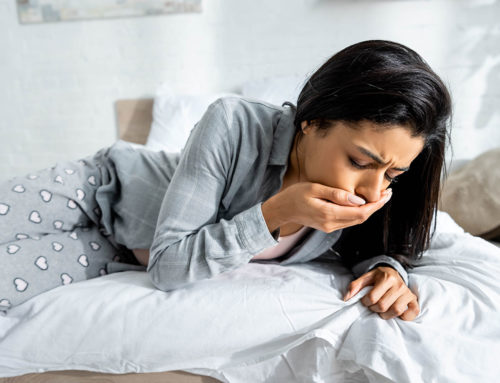Trypophobia, a term derived from the Greek words “trypa” (hole) and “phobos” (fear), describes an aversion to the sight of irregular patterns or clusters of small holes or bumps. Despite its peculiar nature, trypophobia can trigger intense and disproportionate fear in individuals, leading to significant emotional distress and disruption in daily life. This article explores the meaning, symptoms, and treatment approaches for trypophobia, providing a comprehensive understanding of this condition.
The Meaning and Diagnostic Criteria of Trypophobia
Trypophobia is not officially recognised as a distinct mental disorder in the Diagnostic and Statistical Manual of Mental Disorders (DSM-5) published by the American Psychiatric Association. However, it is often considered a specific phobia due to its intense and irrational fear of closely packed holes and similar patterns. Trypophobia meaning encompasses a broad range of visual triggers that cause discomfort or fear in affected individuals.
Diagnostic Criteria and the Role of Mental Health Professionals
Diagnosing trypophobia can be challenging because it is not formally listed in the DSM-5. Nonetheless, mental health professionals often identify it based on the severity of symptoms and the impact on daily life. The diagnostic criteria include significant anxiety or fear triggered by visual stimuli such as clustered holes, leading to avoidance behaviour and distress. The role of mental health professionals is crucial in identifying and managing this phobia. They assess the individual’s responses to trypophobic images and determine if the condition significantly impairs their quality of life.
Symptoms and Triggers of Trypophobia
Common Trypophobia Symptoms
Individuals with trypophobia experience a range of symptoms, including physical reactions such as goosebumps, nausea, increased heart rate, and sweating. Emotional responses like intense fear, disgust, and panic attacks are also common. These symptoms can be severe enough to interfere with everyday life, making it difficult for affected individuals to perform routine activities or interact with others.
Identifying Trypophobia Triggers
Various visual stimuli can trigger trypophobia, particularly images or objects with repetitive patterns of small holes or bumps. Common examples include lotus seed pods, honeycombs, sponges, and diseased skin. Such patterns can evoke a natural response of aversion, thought to be an adaptive evolutionary response to potentially dangerous organisms. Identifying these triggers is essential for understanding and managing the condition.
The Psychological and Evolutionary Aspects
The fear associated with trypophobia may stem from an evolutionary response to dangerous organisms, such as poisonous animals and diseased skin. This natural aversion helps protect individuals from harm, but in the case of trypophobia, the fear becomes irrational and intense, leading to significant emotional distress. Psychological science suggests that the brain may associate these visual patterns with threats, causing an automatic fear response.
Impact on Daily Life
The Effect of Trypophobia on Mental Health
Trypophobia can significantly impact mental health, contributing to anxiety disorders and social anxiety. The fear of encountering trypophobic images or patterns can lead to avoidance behaviours, limiting daily activities and interactions. Emotional distress caused by trypophobia can also exacerbate other mental health conditions, such as obsessive-compulsive disorder (OCD) and depression. This overlap can make it challenging to manage trypophobia without addressing these co-occurring disorders.
Overlap with Other Mental Health Conditions
There is often an overlap between trypophobia and other specific phobias. For instance, individuals with trypophobia may also experience symptoms of social anxiety, generalised anxiety disorder, or OCD. This overlap makes it essential to address all underlying conditions for effective treatment. Understanding the relationship between trypophobia and these mental health issues can help in developing a comprehensive treatment plan.
Treatment and Management Strategies
Approaches to Reduce Symptoms
Several treatment approaches can help reduce the symptoms of trypophobia. Relaxation techniques, such as deep breathing exercises, progressive muscle relaxation, and visualisation of soothing images, can help manage anxiety. Exposure therapy, a common method for treating specific phobias, involves gradual exposure to trypophobic stimuli to desensitise the individual and reduce fear. This method helps the brain reframe the fear response to these stimuli.
Role of Medication
In some cases, anti-anxiety medications may be prescribed to manage severe symptoms of trypophobia. These medications can help reduce anxiety and improve the individual’s ability to cope with triggers. However, medication should be used in conjunction with therapy for the best outcomes. It is essential to consult with a mental health professional to determine the appropriate medication and dosage.
Visualising Soothing Images
Visualising soothing images or engaging in activities that promote relaxation can help counteract the triggers of trypophobia. Techniques such as guided imagery, mindfulness, and meditation can assist in reducing the emotional impact of trypophobic stimuli. These methods help individuals focus on calming and positive thoughts, reducing the intensity of their fear response.
Exposure Therapy and Cognitive-Behavioural Therapy
Exposure therapy gradually introduces the individual to trypophobic images or objects in a controlled and safe environment. Over time, this exposure helps desensitise the person to the triggers, reducing their fear and anxiety. Cognitive-behavioural therapy (CBT) is another effective treatment approach, helping individuals change negative thought patterns associated with trypophobia and develop coping strategies.
Hypnotherapy for Phobias and Fears
Hypnotherapy can be a powerful approach for addressing phobias such as trypophobia by targeting the subconscious mind where fear responses are often rooted. During a hypnotherapy session, a trained therapist guides the individual into a deeply relaxed, focused state, allowing them to explore and reframe the underlying beliefs and associations that contribute to their fear. By replacing irrational responses with calmer, more rational thought patterns, hypnotherapy can help reduce sensitivity to triggers and improve emotional resilience. It is often used alongside other therapies, such as CBT or exposure therapy, to support long-term relief from phobic reactions.
If you’re looking for help to overcome phobias and fears, please don’t hesitate to get in touch. I offer a free initial consultation so we can chat about your specific situation and see if hypnotherapy could be right for you. Then I can either offer you hypnotherapy in London or online.
I am always happy to help just call 07966 464 005 or via this contact form.
Online Therapy and Support Groups
Online therapy offers a convenient and accessible option for individuals seeking help for trypophobia. Many mental health professionals provide virtual sessions, allowing individuals to receive treatment from the comfort of their homes. Support groups, both online and in-person, can also be beneficial, providing a space for individuals to share their experiences and coping strategies with others who understand their struggles.
Conclusion
Trypophobia, while not officially recognised as a distinct mental disorder, can cause significant distress and impact daily life. Understanding the meaning, symptoms, and treatment approaches for trypophobia is essential for those affected by this condition. Seeking help from mental health professionals can provide effective management strategies, including relaxation techniques, exposure therapy, and medication, to reduce symptoms and improve overall well-being. By addressing trypophobia and its associated triggers, individuals can lead a more comfortable and fulfilling life. Additionally, further research into the underlying causes and effective treatments for trypophobia can help enhance our understanding and support for those affected by this condition.











